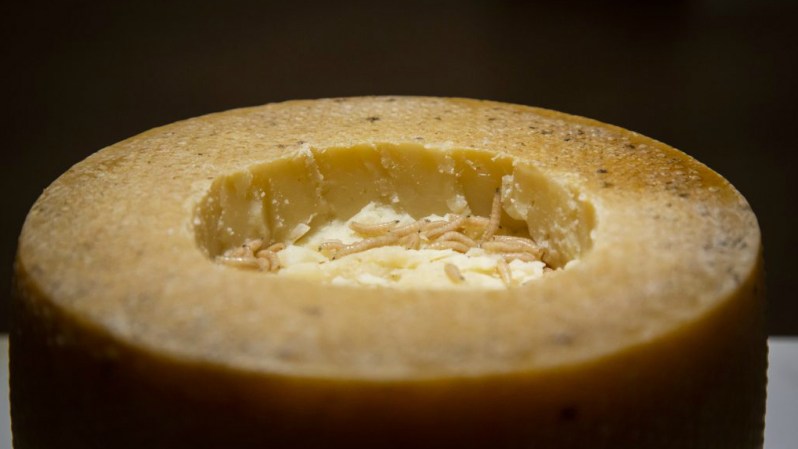
There was a time when museums were reserved for fine art and high-brow nonsense we only pretend to understand. These days, the world is full of wonderfully weird museums accessible to the everyman with everything from broken relationships and all things phallic to ramen and barbed wire. Now, Sweden is set to open one more: the world’s grossest food museum.
This Halloween, the Disgusting Food Museum will open just over the bridge from downtown Copenhagen, in Malmö. Here, visitors will be able to tour exhibits that highlight 80 of the world’s most disgusting foods. The range of grossness runs the gamut from the basic (like Thailand’s notoriously foul-smelling durian fruit); to the relatively tame (like cuy — Peruvian roasted guinea pig); to the rancid (Iceland’s kæstur hákar — five-month-old, fermented shark); to the downright unpalatable (like Sardinia’s casu marzu — maggot-infested cheese).

Of course, “gross” and “disgusting” are relative terms. They’re surprisingly useful responses designed to protect humans from ingesting things we shouldn’t (which does nothing to explain why children routinely eat paste and Legos, but we digress …). Still, what’s considered “edible” — even desirable — food is merely a societal construct. Maggot-infested cheese more closely resembles week-old trash to most Americans, while some Italian’s are willing to pay good money for it. Likewise, you couldn’t pay many non-Americans to try a preservative-laden Big Mac. Who’s to judge? To each his own, right? The museum is well aware of that fact, and their website notes:
“Disgust is one of the six fundamental human emotions. While the emotion is universal, the foods that we find disgusting are not. What is delicious to one person can be revolting to another. Disgusting Food Museum invites visitors to explore the world of food and challenge their notions of what is and what isn’t edible. Could changing our ideas of disgust help us embrace the environmentally sustainable foods of the future?”

Indeed. Samuel West, the museum’s Curator & Chief Disgustologist is hoping to not only shock but also provoke visitors to think beyond their cultural norms. In an interview with Lonely Planet, he notes, “We hope that the museum can contribute to a growing interest and acceptance of more ecologically sustainable protein sources, such as insects.”
For now, the Disgusting Food Museum is scheduled for a limited time only: October 31, 2018, through January 27, 2019. Adult ticket prices will run about USD $20. Sadly, the on-site restaurant only serves “normal” food, so if you’re expecting truly disgusting samples, you’re out of luck.



